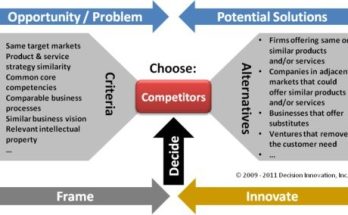Financial clarity is often associated with spreadsheets, budgets, and investment strategies, but one of its most powerful—and often underappreciated—tools is insurance. At its core, insurance provides a framework for understanding and managing risk, which is essential to making sound financial decisions. It brings structure to uncertainty, allowing individuals and businesses to plan with greater confidence. When used thoughtfully, insurance doesn’t just protect assets—it illuminates the financial landscape, helping people see where they stand, what they value, and how they can move forward with purpose.
One of the most immediate ways insurance contributes to financial clarity is by defining boundaries. It spells out what is covered, what isn’t, and under what conditions. This specificity forces policyholders to think critically about their needs and priorities. For example, a homeowner reviewing their policy learns not only the value of their property but also the potential risks they face—from fire to theft to natural disasters. This process of evaluation sharpens awareness and encourages proactive planning. It’s not just about buying protection; it’s about understanding exposure and making informed choices to address it.
Insurance also clarifies financial responsibilities. Premiums, deductibles, and coverage limits create a predictable structure for managing costs. Rather than being blindsided by unexpected expenses, policyholders can anticipate and budget for them. This predictability is especially valuable in business, where cash flow and resource allocation are critical. A company that understands its insurance obligations can plan more effectively, allocate funds with greater precision, and avoid the chaos that comes from financial surprises. In this way, insurance acts as a stabilizer, anchoring financial plans in reality.
Beyond the numbers, insurance prompts deeper reflection on values and goals. Choosing a life insurance policy, for instance, requires considering who depends on you, what legacy you want to leave, and how you want to support loved ones in your absence. These are not just financial questions—they’re personal ones. They invite clarity about what matters most and how financial tools can support those priorities. Similarly, selecting health coverage involves weighing access, affordability, and peace of mind. These decisions reveal how individuals balance risk and reward, and how they define security in their own lives.
Insurance also plays a critical role in long-term financial planning. It complements savings and investment strategies by addressing the “what ifs” that can derail progress. A well-structured insurance portfolio ensures that setbacks—whether medical emergencies, accidents, or legal claims—don’t wipe out years of effort. This protection allows individuals and businesses to pursue growth with confidence, knowing that they’ve accounted for potential disruptions. It’s a form of clarity that goes beyond optimism—it’s grounded in realism and resilience.
Technology is enhancing this clarity by making insurance more transparent and accessible. Digital platforms allow users to compare policies, track coverage, and receive personalized recommendations. These tools demystify the process and empower consumers to engage more actively with their insurance decisions. When people understand what they’re buying and why it matters, they’re more likely to see insurance as an integral part of their financial life. It becomes less about obligation and more about strategy.
Communication also plays a vital role. Insurers who explain policies clearly, offer real-world examples, and provide ongoing support help clients make sense of complex information. This clarity builds trust and encourages engagement. When policyholders feel informed, they’re more likely to review their coverage regularly, ask questions, and make adjustments as their needs evolve. This dynamic relationship fosters financial literacy and reinforces the idea that insurance is not just a product—it’s a partnership.
In business, insurance contributes to financial clarity by supporting risk management and compliance. Companies that understand their coverage can navigate regulatory requirements, protect assets, and respond effectively to challenges. Insurance becomes a lens through which leaders assess vulnerabilities, plan contingencies, and make strategic decisions. It’s not just about minimizing losses—it’s about maximizing insight. A business that integrates insurance into its financial planning is better equipped to adapt, innovate, and thrive.
Ultimately, insurance is a form of financial clarity because it transforms uncertainty into structure. It helps individuals and organizations understand their risks, define their responsibilities, and align their decisions with their values. It’s a tool for seeing the bigger picture, for planning with confidence, and for living with intention. In a world that often feels unpredictable, that kind of clarity is not just comforting—it’s empowering. Insurance doesn’t just protect—it illuminates. And in doing so, it becomes an essential part of a thoughtful, resilient financial life.



